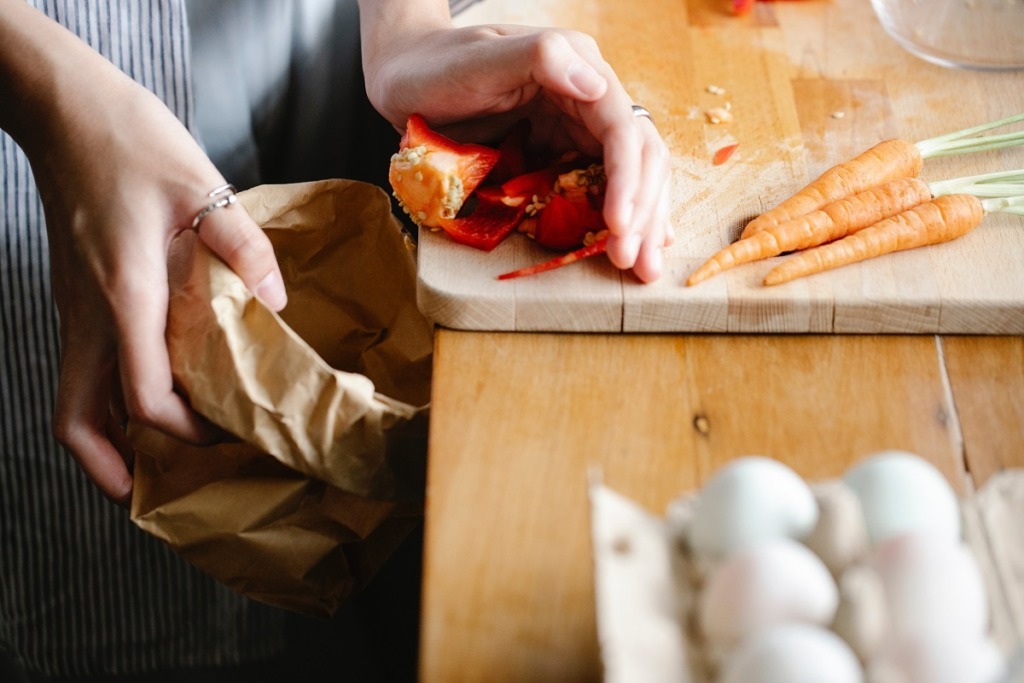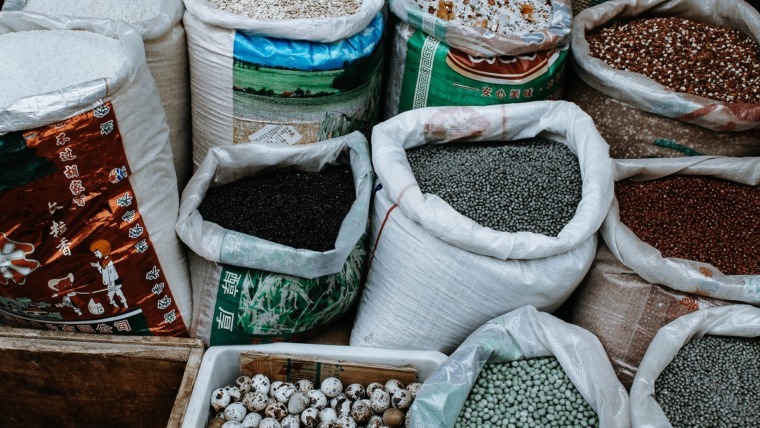
10 Food Waste Hacks
Written by Julia Schafer
Each year Australians send enough food waste to landfill to fill 460,000 garbage trucks! Let that fact sink in for a minute, 460,000 garbage trucks full of food waste! Much of this waste could be avoided if we thought outside of the box and found ways to minimise our food purchases and use leftover food scraps rather than throwing them out.
With this in mind let me share with you ten food waste life hacks to help you minimise food waste in your own kitchen at home.
1. You might have kids that occasionally sneak a cookie and forget to put the lid back on the cookie jar properly, allowing the cookies to go soft and stale. A great use for soft cookies is to make them into cookie crumbs to use in pies, slices and cheesecake bases. Simply put them into your food processor, pulse until they have crumbed then add melted butter and process until combined. Press into the pie case or tray, bake for ten minutes to firm it up and then add your filling of choice. If you’re not quite ready to use them yet, the cookies can be made into crumbs and then frozen in a container or reusable storage bag for later use. Never throw out stale cookies again!
2. We also have in our house a corn chip thief who never manages to reseal the bag properly. The good news is though, that to bring corn chips or salted crackers back to life all you need to do is spread them out on a baking sheet and bake in the oven for five minutes to remove the moisture they have absorbed from the air and revitalise them again! And who doesn’t love crisp, warm, corn chips with their salsa?
3. How hard is it to get the last little bits of peanut butter out of the container? If this is a perennial problem in your home, don’t throw the jar into the recycling just yet. Try adding a squeeze of lime, half a tin of coconut milk, and some dried chilli flakes and microwave the jar for one minute to make it warm, then put the lid on and shake it up. Voila, instant satay sauce to pour over warm steamed veggies (gado gado style), use as a marinade for some chicken pieces or even to dress an Asian-inspired salad or coleslaw.
4. Those teeny, tiny, mustard jars are also just as tricky to get the last smear of tasty goodness out of. Try adding a couple of tablespoons of olive oil, a few splashes of red wine vinegar and a teaspoon of herbs or your choice (I use tarragon). Put the lid back on and shake it up until all the mustard has been released from the inside of your jar and you’ll have made the yummiest dressing for your warm beans or fresh salad greens.
5. If you don’t have a compost heap or worm farm then, “what are you doing!” But seriously, if you don’t have the space for either then you probably throw out a mountain of potato skins every time you make mashed potatoes. Next time try coating the skins in vegetable oil and sprinkle over some sea salt, a couple of grinds of pepper and maybe some paprika to taste, then pop them in the oven to crisp up. Put in front of the family and before you have finished mashing the spuds they will have all been devoured.
6. Store sticks of celery and carrots in jars filled with water to make them stay crisper for longer.
7. Keep the water from steaming last night's veggies in the sink overnight to cool down and then use it the next day to water your plants and provide them with some added nutrients. If you have boiled veggies in water, resist the urge to pour the leftover water down the sink, instead store it in a container in the freezer to make into vegetable stock to add extra flavour and nutrients to winter warming soups. If you start with a large enough container you can just keep topping it up every time you cook veggies until it's full and ready to use.
8. It’s the lemon season at the moment where I live and my tree is laden with fruit so I have been juicing many of them and freezing the juice in a silicone muffin mould for later use. The ensuing bowl full of skins could just go into compost but instead, I cut them into halves and push them into a large clean glass jar, top up with white vinegar and leave them to sit for two weeks to infuse. This makes an excellent all-purpose cleaner that in conjunction with a sprinkle of bicarb soda will make your stainless steal sink, handbasin and countertops clean and hygienic leaving a hint of lemon scent, instead of the smell of your local fish and chip shop.
9. Save meat bones, carrot tops, celery and broccoli ends and onion trimmings in containers in the freezer. Once a month brown the bones in an oiled oven tray, add the vegetable trimmings and stir to brown them too. Remove to a large saucepan, add water to cover and simmer for 30 minutes to infuse the flavours for soups or simmer longer to reduce and enhance the flavour for homemade sauces.
10. Weekly meal planning is really the key to having reduced food waste at home. If you take the time once a week to sit down and write the meals you are hoping to prepare and an extensive shopping list then you will be less likely to impulse buy once at the store. Look up the app store for a meal planning app like Mealime, Eat This Much or Whisk to help simplify and automate your meal planning.
Like most things you bring into the house, I encourage you to shop using “The Planet” as your lens, by being a conscious consumer. Before you buy stop and think, “what will I do with the scraps, what will I do with the leftovers, how can I store this so it lasts longer?” And if you know the answers to these questions then you can be satisfied that you are making a waste-free purchase, living your values and leaving a lighter footprint on the Planet. Julia Schafer is passionate about sustainable living, believes that the future of food production is Urban Gardening and is a self-confessed Power Tool Princess.
10 Food Waste Hacks 10 Food Waste Hacks 10 Food Waste Hacks 10 Food Waste Hacks



